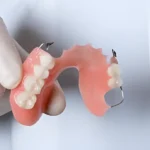Owning a pool comes with many responsibilities, and detecting leaks is among the most crucial tasks to ensure your pool’s longevity and functionality. One of the common issues pool owners face is a pressure-side leak, which occurs in the pressure side of your pool’s plumbing system. If left unchecked, these leaks can lead to significant water loss, structural damage, and costly repairs. Understanding the signs and solutions can help you address the problem promptly and keep your pool in top condition.
Recognizing the Signs of a Pressure Side Leak
The first step in managing a pressure-side leak is identifying its symptoms. Common signs include a noticeably low water level in your pool, visible water sprays or puddles around your pump, or dripping from the discharge pipes when the pump is running. You may also notice lush patches of grass or damp areas near underground plumbing. If turning on the pool pump exacerbates the water loss, it’s a strong indication of a pressure-side leak.
Performing a simple bucket test can help rule out water loss due to evaporation or splashing. If the test confirms a leak, inspecting your pool’s plumbing system for cracks, tears, or worn-out components is the next step.
Common Causes of Pressure Side Leaks
Pressure-side leaks occur when water is forced out of small openings, cracks, or compromised components in the plumbing system due to high pressure. Here are the main areas to inspect:
- Impeller: The impeller creates pressure to push filtered water back into the pool. Over time, wear and tear or blockages can cause leaks. Regular maintenance or replacing damaged impellers can prevent further issues.
- Gasket or Diffuser O-Ring: Located between the pump housing and motor, these components are prone to wear and tear. Inspecting and replacing worn-out gaskets is vital for preventing leaks.
- Discharge Pipe: Pipes that disconnect or shrink due to heat can lead to leaks. Ensure your discharge pipes are secure and provide adequate insulation to prevent heat damage.
- Pump Housing: Hairline cracks in pump housing can cause leaks. While epoxy can offer a temporary fix, replacing the pump housing is often a more reliable, long-term solution.
Addressing Pressure Side Leaks
Pressure-side leaks should be addressed immediately to prevent further damage. Here are some actionable solutions:
- Regular Inspections: Schedule routine checkups of your pool pump and plumbing components to catch early signs of wear and tear.
- Professional Repairs: If the leak is beyond a DIY fix, consult a professional pool technician to address the issue effectively.
- Upgrade Old Systems: If your pool’s plumbing system is outdated, replacing worn-out parts or upgrading to modern systems can prevent recurring problems.
- Seal Cracks: For minor leaks in the pump housing or pipes, high-quality epoxy can provide a short-term seal. However, replacing damaged components is the most reliable solution.
Renovating Your Pool for Long-Term Performance
If leaks have caused significant damage or if your pool is showing signs of aging, it may be time to consider a more comprehensive approach. Renovation not only resolves existing issues but also enhances the aesthetics and functionality of your pool. Companies like Professional Aquatic Services specialize in swimming pool renovation in Sanford Florida, offering tailored solutions to upgrade your pool with modern features, improved filtration systems, and durable materials. Renovation can also include resurfacing, adding automation systems, or installing energy-efficient equipment to reduce maintenance costs over time.
Preventive Measures to Avoid Future Leaks
Preventing leaks starts with proactive care:
- Maintain Proper Water Chemistry: Balanced water chemistry reduces wear on your plumbing system and prevents corrosion.
- Winterize Your Pool: In colder climates, protect your pipes and pump from freezing temperatures by properly winterizing your pool.
- Avoid Overpressurizing: Use the correct pump size for your pool to prevent unnecessary pressure on the plumbing system.
When to Call the Experts
While some minor issues can be resolved through DIY efforts, persistent leaks often require professional intervention. A qualified pool technician can accurately identify the cause, provide effective repairs, and recommend preventive measures to avoid future leaks.
Taking prompt action when you suspect a pressure-side leak is essential for preserving your pool’s health and ensuring your swimming experience remains stress-free. Whether it’s a quick fix or a complete renovation, addressing leaks promptly will save you time, money, and frustration in the long run.







